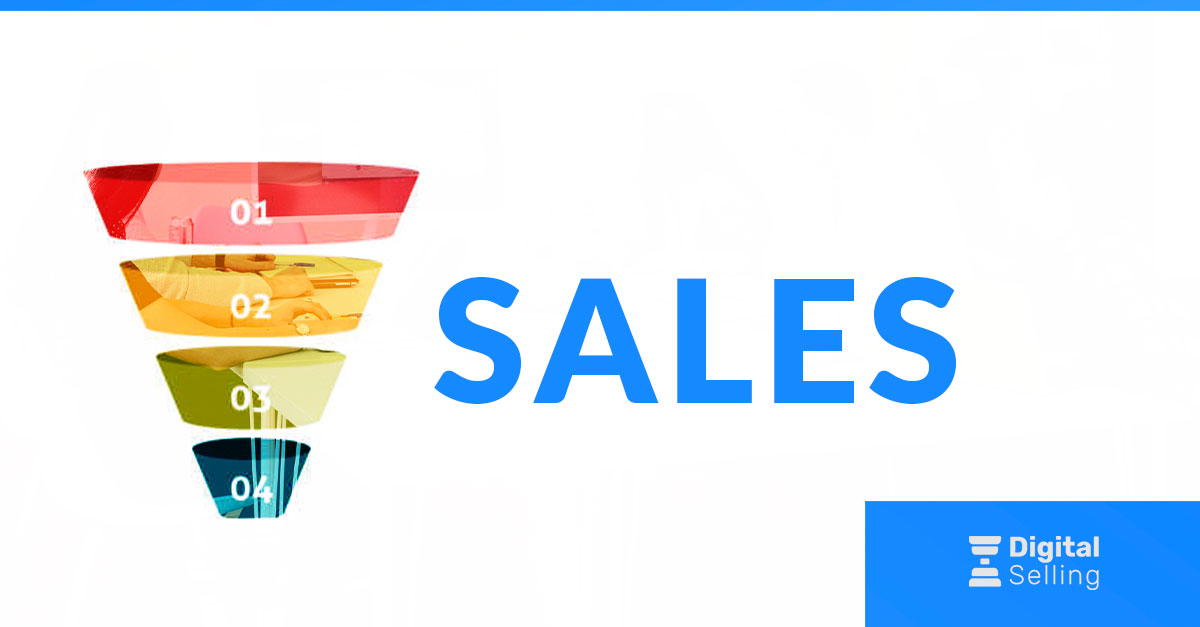The sales funnel is one of the fundamental concepts of Digital Marketing and Sales. It’s been around for over 100 years and has had several iterations, but all seek to establish a map that lets you visualize the steps potential customers go through to become customers.
By accompanying contacts throughout the sales stages, Marketing and Sales are able to align their actions and processes with the specific doubts and obstacles of potential customers at each stage. In this way, sales managers are more effective at transforming the contacts that Marketing generates into actual customers.
How the sales funnel works
Although the specific stages of the sales funnel vary from company to company – depending on the business model, customer expectations and needs, the sales process, … – any traditional funnel ends up essentially corresponding to 4 major phases:
- Attention
- Interest
- Desire
- Action
In a real funnel, the largest amount of liquid enters at the top. As you move to the bottom of the funnel, the volume decreases. This analogy is useful for companies, but with a big caveat.
While in a funnel the quantity that leaves is the same as that which entered, in a sales funnel the visitors to a website do not all turn into sales. In other words, the best analogy is a perforated funnel, which ends up losing some of the liquid.
The objective of the process that we are going to describe below is precisely to ensure that as many contacts as the possible move from the top to the bottom of the funnel.
Attention
The main function of Marketing is to capture the largest possible audience within the target audience. This is nothing new. Content is a great marketing ally at this stage: blog articles and other informational materials, publications on social networks, the press, advertisements, partnerships, etc. are common formats for attracting the public’s attention.
Using content to draw attention is a concept based on the idea that a large percentage of our potential customers look for information in order to solve a pain point they have.
As an example, imagine a company that has developed billing software that integrates with eCommerce platforms. Possibly, a part of your audience still manages invoices manually when they receive an order on the website. It is for this audience that it makes sense to produce “top of the funnel” marketing content, which presents a solution to optimize the process with accessible terms and not too technical.
As this audience learns more about available solutions, they will need more in-depth information, and eventually, they will leave their contact details, which takes us to the next stage.
Creating interest and stimulating desire
Interest and desire go hand in hand, let’s see how.
When leads have already defined their problem well and are researching specific solutions, Marketing steps in to generate interest in your solution.
This means producing other types of content: didactic resources, webinars, videos, and email sequences, among other ways to show not only the product’s characteristics but also the value (or intangible benefits). In this way, you are inciting interest in the product and the desire to obtain the same benefit.
Introducing topics with an increasing level of specificity educate the lead and help to position yourself as an authority on the topic. But not only. The consumption of specific topics gives clues about the true stage of the lead in their buying journey, which is extremely useful for sales.
Through certain contact capture mechanisms, also known as lead magnets – for example, downloadable materials, newsletter subscriptions, or account registration – we are able to obtain some contact information. At that moment, they are no longer just visits and become leads.
This is the time when Sales Development Representatives (SDRs) contact leads to find out if they are Sales Qualified Leads (SQLs), that is if your offer meets their needs (if not, they continue to be nurtured by Marketing). If so, they move on to the next stage.
Action
The SQL is the leads that make it to the bottom of the funnel. They already know everything about their problem, they know what they need, and what the best solution is and they are prepared to choose the supplier. Now is the right time for the Account Executive to submit a proposal.
After the Marketing nutrition, the preparation with the SDRs, and with the certainty that they are in the ideal phase to receive a proposal, the probability of accepting the proposal increases exponentially. Furthermore, the probability of giving up on the service or product after implementation is also lower, because this process ensures that the customer makes the best decision for him.
Benefits of the sales funnel
- Having a well-structured funnel allows you to understand the level of knowledge and interest in your offer.
- Timing the submission of the proposal correctly avoids bombarding potential clients with too much information too soon.
- Since not all contacts are ready to buy, the sales funnel helps prioritize the right leads and save sales reps time.
- Allows you to adjust the themes and frequency of campaigns to send the right message at the right time.
- It allows managers to scale the sales process, create some predictability about revenues, and set goals.
- Allows you to align Marketing with Sales and optimize both processes.
How are the sales funnel changing?
Marketing and Sales, and the sales funnel by drag, are entirely centered on customer needs. It is no coincidence that the funnel is divided into “attention, interest, desire, and action”. This means that the activities and processes of the companies act according to the needs of the consumer and not the other way around.
Digital marketing, marketing automation, and analytics have dramatically changed the process of converting new leads into customers. Sales reps now rely less on intuition to close sales – instead, they use complex data to prioritize sales opportunities.
Finally, one of the biggest changes was the post-sales entry into the funnel. In the sales funnel just described, we are at the purchase decision stage. But today, a sales funnel is not complete without contemplating implementation and customer retention. Marketing and customer success comes into play after the sale to promote customer satisfaction and brand advocacy.

 Português
Português Português
Português

Pingback: What is a sales process and how to create one? - Digital Selling